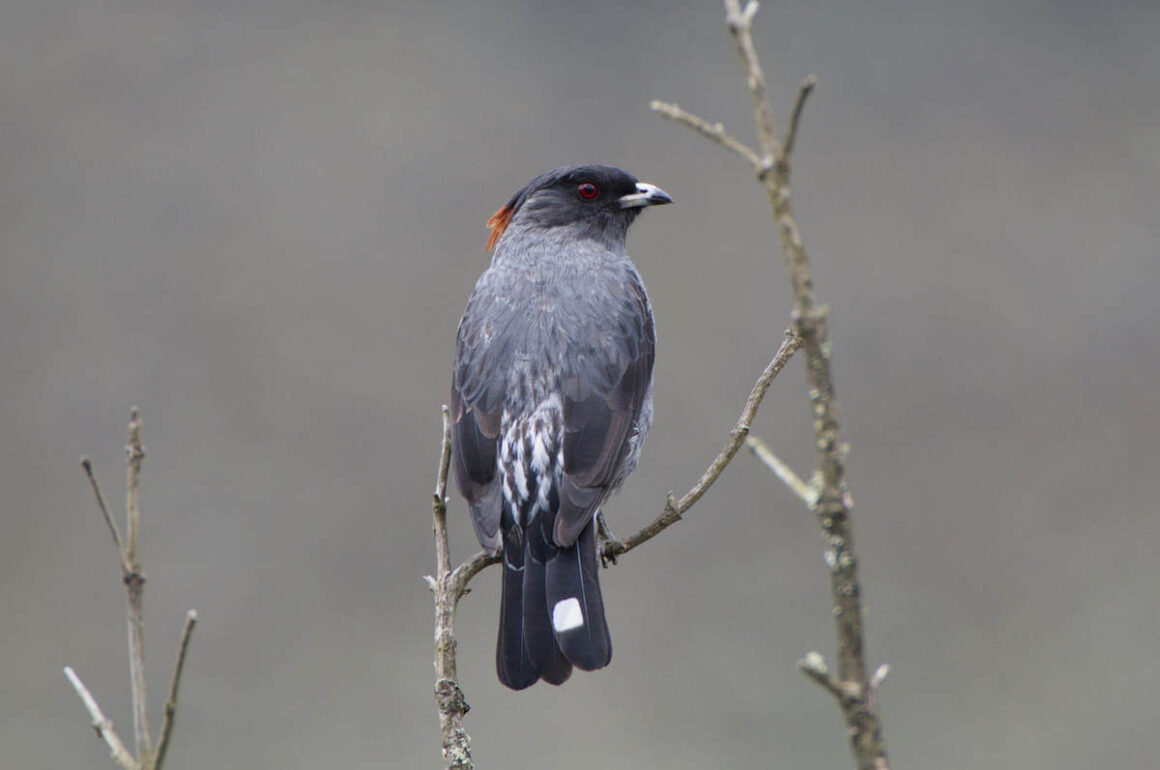
By Aleksandar Topalov
A long-distance move and a visit to a picturesque little seaside town on New Zealand’s east coast awoke a deep passion that lasts to this day. Aleksandar started birdwatching when he was 10, after a face-to-face encounter with an Erect-crested penguin. Since then he has traveled the globe, his passion for birds growing with each new encounter. A birder by day and astrophotographer by night his exploration of the near and far truly never stops.
Don’t you just love getting up at the witching hour to catch a 3 a.m. flight? Going to bed at 9 only to get up at midnight in order to hurry to the airport on time feeling lost in time and space, forgetting which city, country, or even planet you’re on. One reason that I can think of for subjecting myself to such a torturous experience is if I am going birdwatching. Oh yeah, I almost forgot. I caught traveler’s diarrhea four days ago in the jungle (Imodium to the rescue, but just barely).
I had just ended my ten-day birding adventure in Ecuador (which is a story for another time) when I decided, since I had an amazing time, to prolong my trip a bit longer before heading back to Europe. So I figured why not make a stop-over in Bogota since that was my best and logical connection with my flight back home. I had never been to Colombia before so didn’t know the best birding spots in the vicinity of the capital. I contacted Luis Garcia, my guide-to-be, from Mutar ECO Environmental who was recommended to me previous to my trip and he agreed to pick me up at the airport at 5 a.m. I asked him if there were any good half/one-day locations close to the city and he replied that Bogota is one of THE capitals of the world for such short excursions. There were truly plenty of amazing options to choose from but since I had spent the last week wandering through the hot and humid Amazon jungle he suggested we go up to Sumapaz, the largest paramo in the world. I fancied a bit of cold and fresh air after the scorching and at times suffocating heat of the lowlands. So that was that and just before I was to board my plane he sent me a text saying that there was a surprise waiting for us at the Reserva Chiguaza, their hub so to say where we would have our breakfast and from where we would head up to the paramo. So a bonus on my one-day trip. I like bonuses.
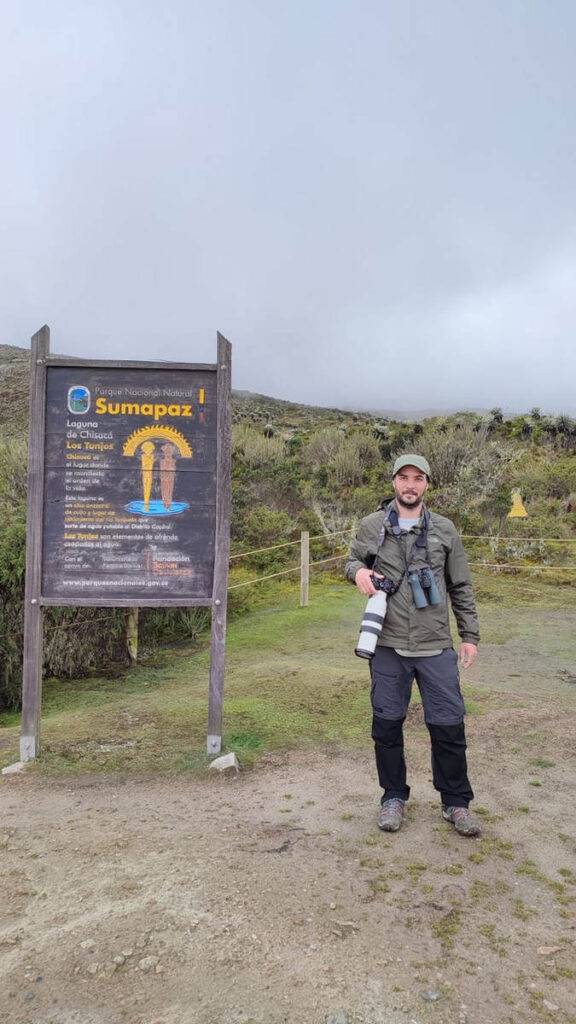
As agreed, Luis picked me up at 5 and we started down Avenida El Dorado. It was raining. I was very tired and still a bit nauseous from the stomach ailment. For just a split second I felt down and gloomy and didn’t care for birding one bit. I just wanted to lie down and if possible completely blackout. But luckily that didn’t happen because as soon as we climbed up to Chiguaza the rain stopped. My stomach was still cursing and growling but the instant I got out of the car and saw my first bird I didn’t care anymore; it would have to wait until this day was over. Perched on top of a nearby slender tree was a Black-backed Grosbeak (Pheucticus aureoventris).
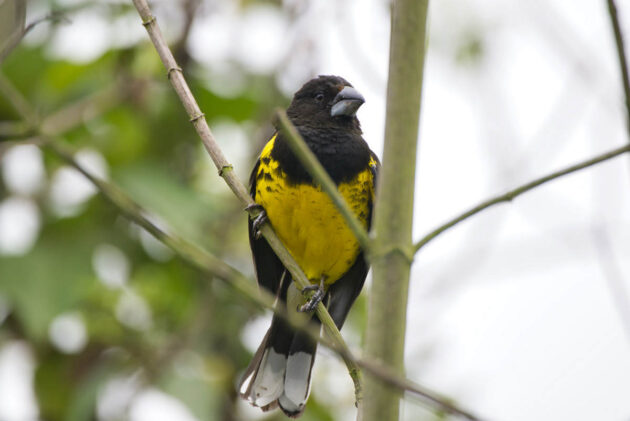
With my first Colombian bird secured in my pocket, I was ready to eat. As we entered the common room Luis pointed to a table where a number of people were already having their breakfast and said: “There’s your surprise”. Sitting among them was none other than the legend of Colombian birding, Diego Calderon.
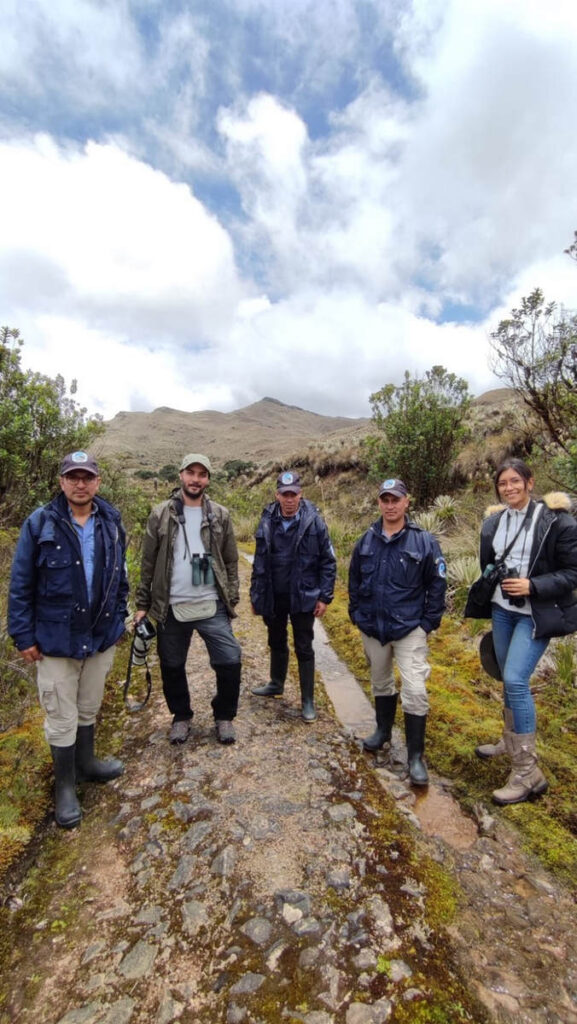
After a hearty and welcoming breakfast prepared by Luis’s mom and a short chat with Diego, we started again, driving higher and higher toward the paramo.
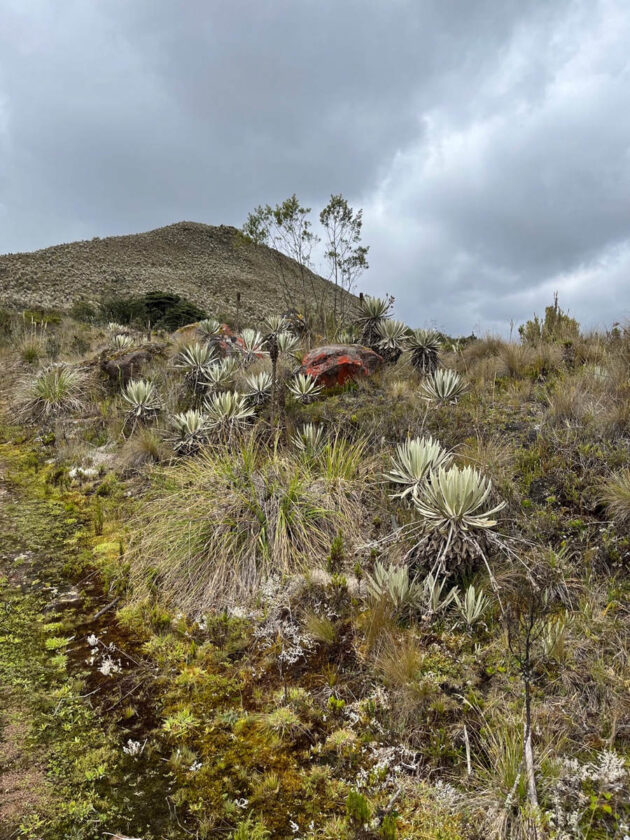
A Colombian paramo is basically a high-altitude moorland nestled in mountains between the treeline and glaciers. Broadly, the term may refer to a variety of alpine tundra ecosystems. The Sumapaz paramo has a truly inhospitable cold and wet climate with very quick changes from short periods of warm climate to freezing cold. It almost reminded me of southern Patagonia minus the strong winds. Lucky for me it was not cold that day and the weather was generally calm and not threatening. Looking over the tundra with its green-grey stunted vegetation I asked Luis why didn’t people hike across the moor?
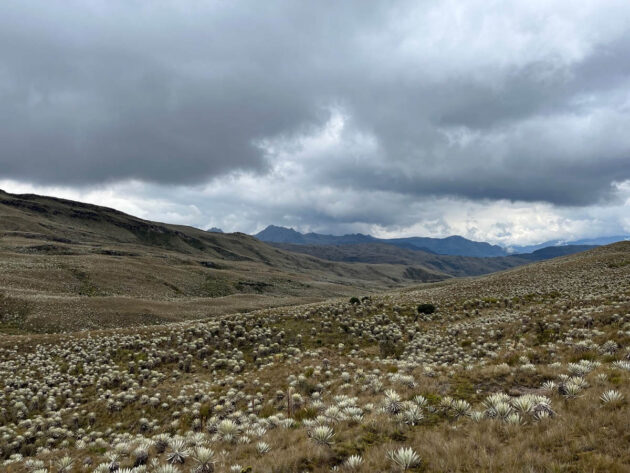
“For an inexperienced visitor, there is a danger of falling into chupaderos (drainages) and drowning. Because of the high humidity, the ground remains soaked and covered by bodies of water and sticky mud throughout the year. They are difficult to spot as they are often covered with dense, flat vegetation. And there are also antipersonnel mines from the war in some areas of the park but those areas are closed to visitors.”
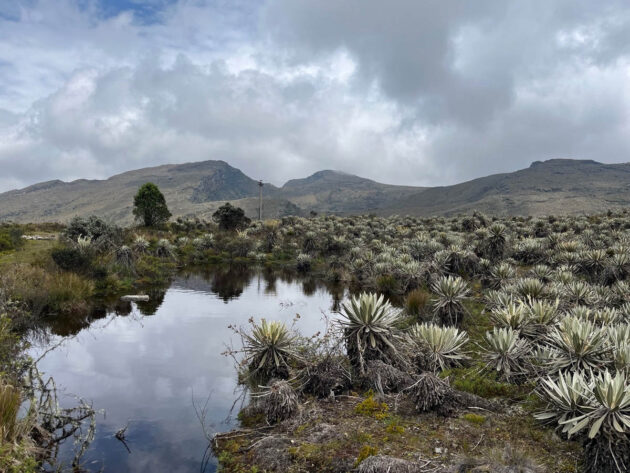
As my thoughts lingered on Luis’s answer he slowly tapped me on the shoulder and pointed his finger to a cluster of bushes not far from us. A curious Tawny Antpitta (Galleria quitensis) showed itself on a horizontal branch …
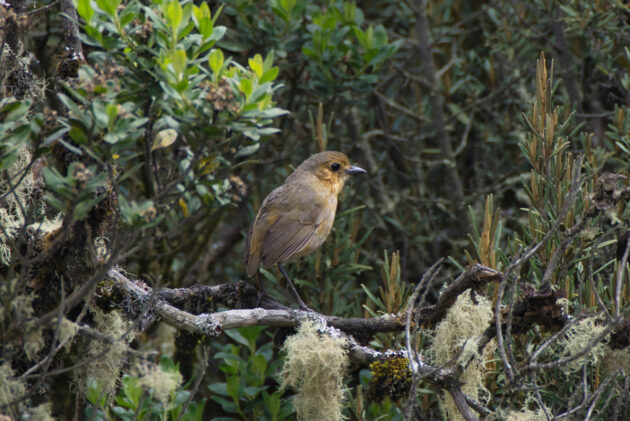
… and a weird-looking White chinned Thistletail (Asthenes fuliginosa) landed on a tree just next to our car providing great views.
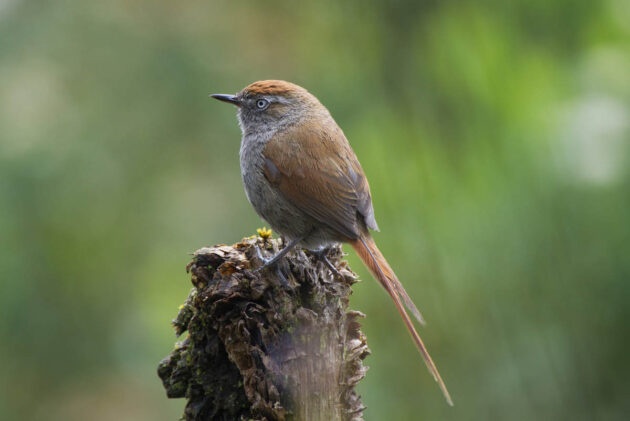
The same tree also hosted a rather shy Plumbeous Sierra Finch (Phrygilis unicolor), one of the featureless South American birds. The antpitta then hopped on top of a dead Espeletia subshrub and just stood there. An antpitta out in the open! After Ecuador’s many eye-straining moments in the dark to get a glimpse of them, this was something else. An incredible sight. A couple more were later seen like this so this was not an exception. On a hill slope behind us, a leucistic Great Thrush (Turdus fuscater) perched proudly on a lichen-covered branch. For me, the feeling you get when seeing a leucistic bird is almost like seeing a lifer.
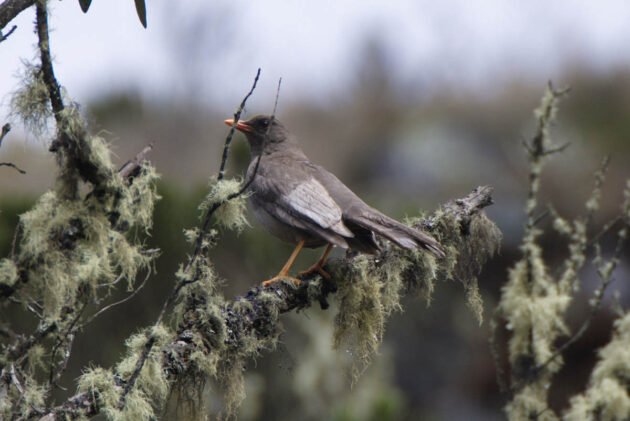
Several Glossy Flower Piercers (Diglossa lafresnayii) were flying to and fro the whole time. The paramo was starting to reveal its curiosities.
Although paramos can’t boast of having a high species count, nevertheless they easily compensate for that with very singular and most interesting species. What’s more, they host quite a number of endemics, both animal and plant. As we passed by a small body of water a couple of Apolinar’s Wrens (Cistothorus apolinari) skittered in between the stalks of grass and one of them even sort of displayed on top of a small plant with its tail raised high up.
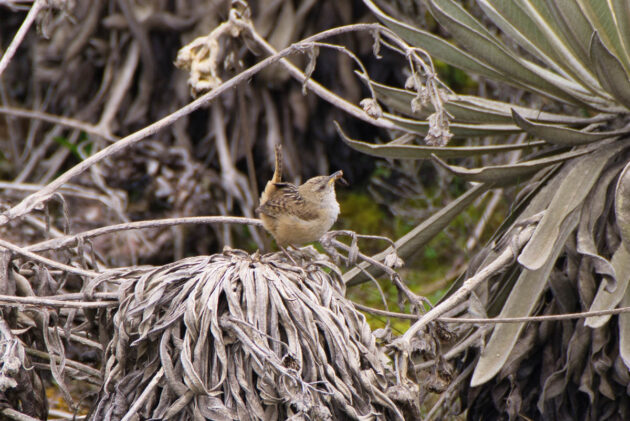
We were constantly on the lookout for the elusive and skulking Bogota Rail but unfortunately, none were to be seen that day. To compensate for that loss we were rewarded with stunning sights of the famous Green Bearded Helmetcrest (Oxypogon guerini), another Colombian endemic with a very limited range. With their pointed green strip on the throat bordered by a spiky black and white crest, the extraordinary males were seen foraging at flowering paramo shrubs, preferring the espeletia subshrubs.
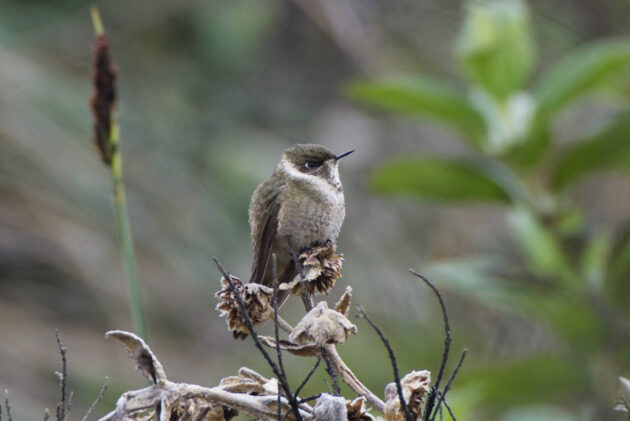
Accompanying them were Shining Sunbeams (Aglaeactis cupripennis) and Bronze-tailed Thornbills (Chalcostigma heteropogon).
Our next stop was at the Laguna de Los Tunjos, one of many freshwater lakes in the park. We were greeted by a beautiful view of the lake and characteristic Andean waterfowl, namely Andean teals and ducks, along with a dozen or so American coots. Two park rangers were to be our guides as we left the road and started on foot up a winding narrow path that took us to the top of one of the many rocky hills in the park. The whole landscape seemed like something from a Jules Verne novel with weird-looking plants and strange creatures never gazed upon by human eyes. As we walked parallel to a rock face on the left, a suspicious set of eyes followed us from the precipice above. It was a Plain-capped Ground Tyrant (Muscisaxicola alpines). We saw another individual on a lichen-covered rock sometime later.
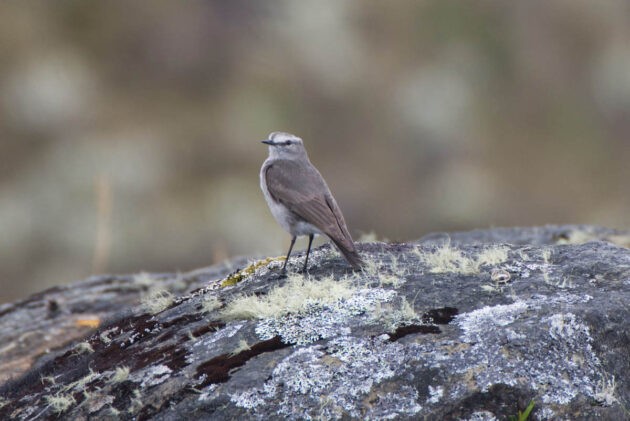
A Black-chested Buzzard Eagle (Geranoaetus melanoleucus) circled above us and a number of Brown-bellied Swallows (Notiochelidon murina) were seen. From the windy hilltop, the view opened on wild rolling hills all dotted with whitish-looking shrubs which at a distance resembled small patches of snow. A solitary Black-tailed Trainbearer (Lesbia victoria) flew from flower to flower in search of nectar. One interesting thing about the paramos is that although they might seem a straightforward birding location lacking dense lowland vegetation, you can still easily miss many species if you are not alert. I noticed that on our way downhill when our pace slowed. Suddenly I noticed new birds. Many Striped Canasteros (Asthenes flammulata), Brown-backed Chat-Tyrants (Ochthoeca fumicolor), Pale-naped Brushfinches (Atlapetes pallidinucha), and Scarlet-bellied Mountain Tanagers (Anisognathus igniventris) were all around us perched or foraging. Luis said they were all there on the way up, he just saved them for later.
Military checkpoints outside of cities are a common thing in Colombia. One of them was very special to me. On our way back we were stopped at one such checkpoint by three fully armed soldiers. As they discussed something with Luis I looked out the car window and saw a spectacular sight, not ten meters from where we were stopped. Perched on top of a leafless low tree was a Red-crested Cotinga (Ampelion rubrocristatus). To see any cotinga perched this close and in the open is an incredible experience. Instinctively and with lightning speed I raised the camera lens but paused thinking my hasty movement might cause alarm with the soldiers. Ah, what the heck! What’s the worst that can happen? So I opened fire silently. With a silly wide smile on my face, I was one happy birder as we continued our way slowly downhill and back towards the capital.
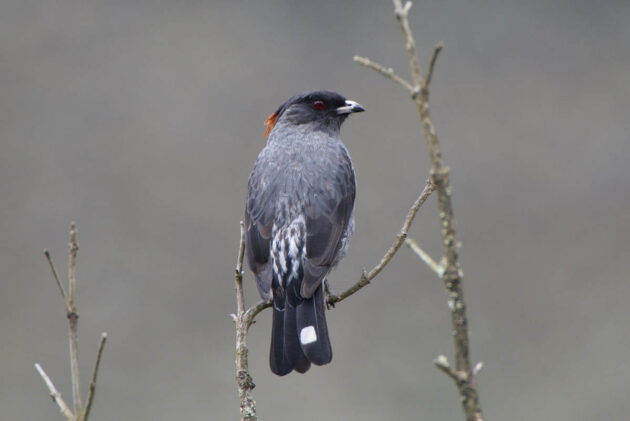












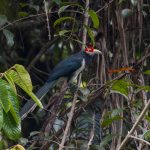
Awesome trip report. Paramo birding is amazing, despite the limited diversity.
Thanks Mike!
Great report!
Thank you Gojko!
Thank you for sharing your adventure! We’ll be at Sumapaz on Saturday Dec 9, 2023.
Even more excited after reading your tale. Hope you got to feeling better soon after your visit!